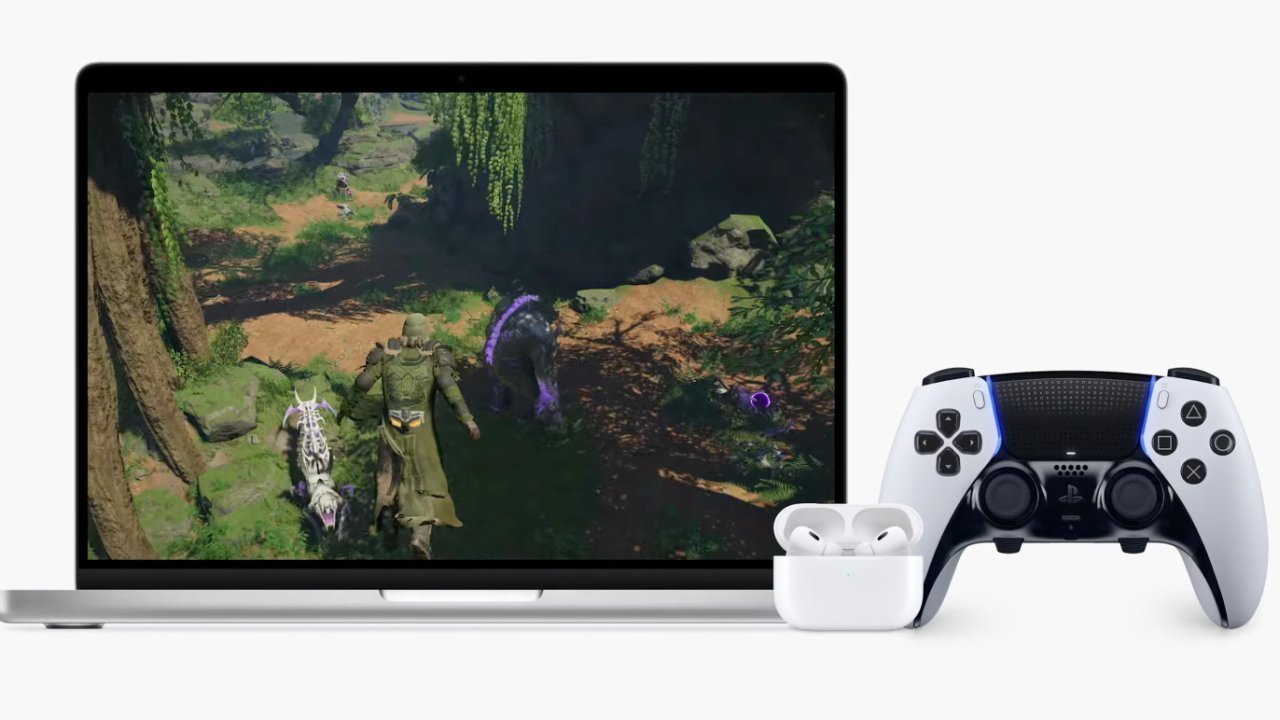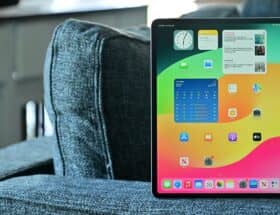Apple chips are becoming more suitable for games.
 0 Facebook x.com Reddit
0 Facebook x.com Reddit
The fastest Apple computers are the new iPad Pro and M2 Ultra Mac Studio. Here's how, where and when the iPad Pro can beat Apple's desktop speed demon.
Whenever Apple or any other technology company releases a new product, there is usually a desire to try and compare them. Comparing Apple Silicon chips to other tablets in a series of standardized tests can demonstrate, for example, the chip's performance and how it compares to others.
Although everyone can easily understand that the higher the score in the test, the better the chip performs, but that is not all. You should also take into account that a benchmark cannot perform only one test.
Benchmarks are usually presented in terms of single-core and multi-core performance. Given two metrics, as well as multiple kernel types, it's a slippery slope that can lead to confusion.
That's all you need to understand what these tests mean.
Single-core, multi-core and threading
Decades ago, the processor performed only one task at a time. There was no need to worry about “counting cores”, calculations and tasks were performed quite linearly.
Over time, the industry began to include multiple cores in chips. A single core is a separate processor within a CPU.
With dual-core or quad-core chips, this meant that each core could work on a separate task independently. As a highly simplified example, this means that one core could be used to run spreadsheet-related processes, and a second core could be used to run an image editing tool.
Dual-core and quad-core chips are helping to revolutionize the PC industry [Pexels/Sergey Starostin]
For a large number of discrete tasks, this can help clear up the work pile, since each core can take another task from the list after the first one completes.
There are some chip technologies that can improve processor performance, such as dividing the cores into multiple virtual cores in the form of “threads.” It can also help improve performance.
For many discrete tasks, multi-core chips can help handle the workload. However, some types of applications require multiple cores to handle multiple tasks simultaneously.
This is especially useful when applications need to delegate tasks to other processes or when the required tasks need to be processed in parallel.
These tend to be very intensive tools, such as creative tools, productivity packs, and some games. For many apps on an iPhone or iPad, many of them will actually only run on one core, even if other cores are available.
Performance and efficiency cores
Over the years, not only processors have multiple cores, but the principle The operation of these cores has also changed.
The old-fashioned chips mentioned above will run as fast as possible. If there were more cores on the chip, they would be completely identical and would work at full power when necessary.
This is called symmetric multiprocessing (SMP), but many modern chips go a different route. Asymmetric multiprocessing (AMP) processors can have multiple cores, but they are designed differently.
There are usually two different kernels to consider: performance kernels (P kernels) and efficiency kernels (E kernels).
The performance cores in the M4 are physically larger than the efficiency cores [Apple]
A processor may have a different number of each core. For example, the M4 can have a nine-core configuration with three performance cores and six performance cores, or a ten-core version that increases the number of performance cores to four.
The performance and efficiency engines work the same because they can perform tasks in the same way. However, they are designed to work differently.
Performance cores are typically larger and run at higher clock speeds. It can perform tasks quickly, but usually wastes energy and heat.
Efficiency cores are typically designed to be smaller in size and as energy efficient as possible.
As a visualization, imagine that you need to travel from one city to another. Driving a Ferrari will get you to your destination quickly, but at the expense of fuel, while a minivan will be slow but economical.
Both cars will get you where you need to go, but the speed and resource consumption are very different.
Having two types of cores on a chip provides many benefits. For example, distributing background tasks across efficiency cores to save performance tasks for heavier workloads.
It can also save power over time, which is an important feature for mobile devices like the iPhone or iPad.
Benchmarking and interpretation of results
Benchmarking involves the use of certain processes or tools to run chip or hardware performance checks.
This may take the form of calculating the time required to complete certain tasks. In some cases, there are test suites that run a number of tests and produce an overall score.
One of the most widely used testing tools is Geekbench, whose single-core and multi-core tests are often mentioned in reviews.
As the name suggests, the single-core test involves Geekbench tuning tasks limited to a single core. Typically this task is assigned to the performance kernel rather than the efficiency kernel.
Multi-core tests require the use of all available cores, regardless of whether they are performance or efficiency cores.
Example of Geekbench ratings for M-series chips
When interpreting the results, a single-core test can be quite similar for all processors in a chip family.
For example, each generation of M-series performance cores are designed identically, so you'll get similar scores in single-core tests. This is regardless of whether you are using an Ultra chip or one of the lower tiers.
You will find many more options for multi-core testing since all cores are used for the test. Often you'll find that chips with more cores perform better in multi-core testing.
However, you should also keep in mind that the test should also take into account the number of cores and the types of cores available. A chip with two performance cores and eight efficiency cores will perform worse in the multi-core test than a chip with six performance cores and four efficiency cores.
For the average smartphone user, the performance of one core is the most important of the two. Since it's quite difficult to create programs that can benefit from multiple cores working together, most everyday applications will really only run on one core.
iPad M4 tops the ranking of single-core processors pile
Apple's introduction of the new iPad Pro brings with it a new chip and a surprising situation when looking at the tests.
Looking at the Geekbench single-core results, the best Mac is the 16-inch MacBook Pro with M3 Max, which uses 14 CPU cores. As a result, he scored 3131 points.
The 9-core version of the iPad Pro M4 scored 3630 points in its own test.
At first glance, it seems that the M4 in the iPad Pro is the best chip of Apple's own design. However, this is only if you look at it from a single-core performance perspective only, as things are a little different when looking at multi-core performance.
The aforementioned iPad Pro M4 scored a very good 13,060 points in multi-core testing. Based on the iPhone and iPad listings, it's much faster than its closest competitor, the iPad Pro M2, which scored 9,646 points.
But in the Mac list, the M4's multi-core performance lags far behind many Macs. Topping the list is the M2 Ultra in Mac Studio, which has 24 GPU cores and scored 21,329.
Moving down the table, all the Macs that beat the new iPad Pro M4 have more cores. Simply put, the more cores available, the higher the multi-core score can be.
While this isn't the most powerful multi-core chip, it's worth keeping in mind that we're talking about the M4, which should be the base model of this family of chips. There will almost certainly be M4 Pro and M4 Max chips, which could also have more cores.
If Apple releases the M4 Ultra — and it is likely that this will happen — this will certainly help the M4 significantly improve its multi-core processor position in the future.
And then this Mac will be at the top of its speed in every way.
Power in practice
As for tests, they are a good method for determining the peak performance of a computer or mobile device. It's nice to know that your shiny new MacBook Pro can perform at a high level.
It is also useful to know the actual performance before purchasing. An equal number of cores does not mean equal performance, especially if the split between performance and efficiency cores is too different.
Battery is not a factor in performance tests since they are performed based on having enough power. In fact, power consumption is a big issue, especially for mobile computers or equipment like iPhones and iPads.
This is where differences in kernel usage come into play. You might imagine that the iPhone would err on the side of using efficient cores to be more battery efficient.
Without these core differences, it's easy to imagine that a smartphone could drain its battery much faster. Efficiency Cores are designed to keep you using your iPhone for as long as possible.
Performance cores can certainly be useful, for example in games. The efficiency cores will at least mean you can check your email late into the night.
Follow AppleInsider on Google News.










